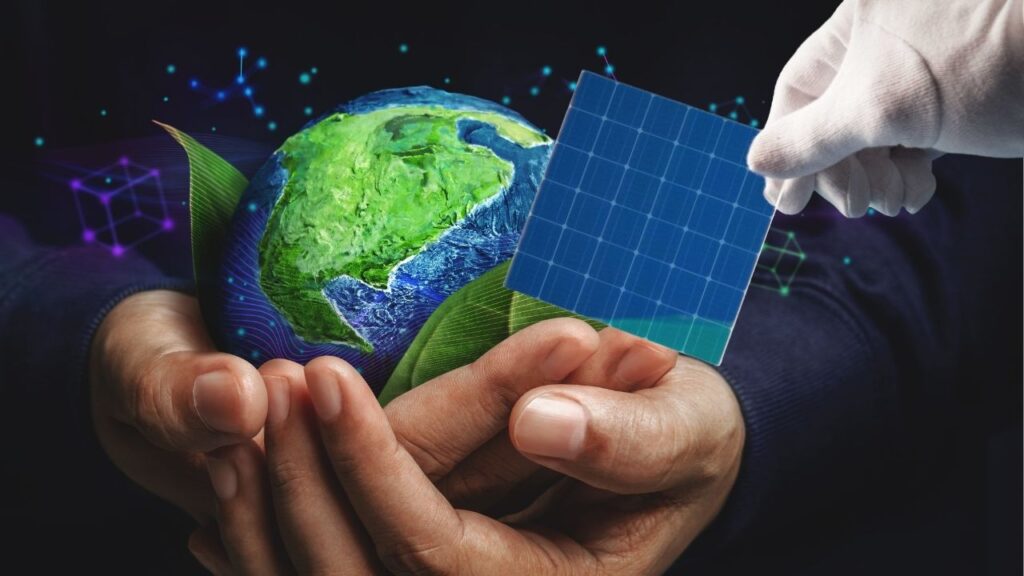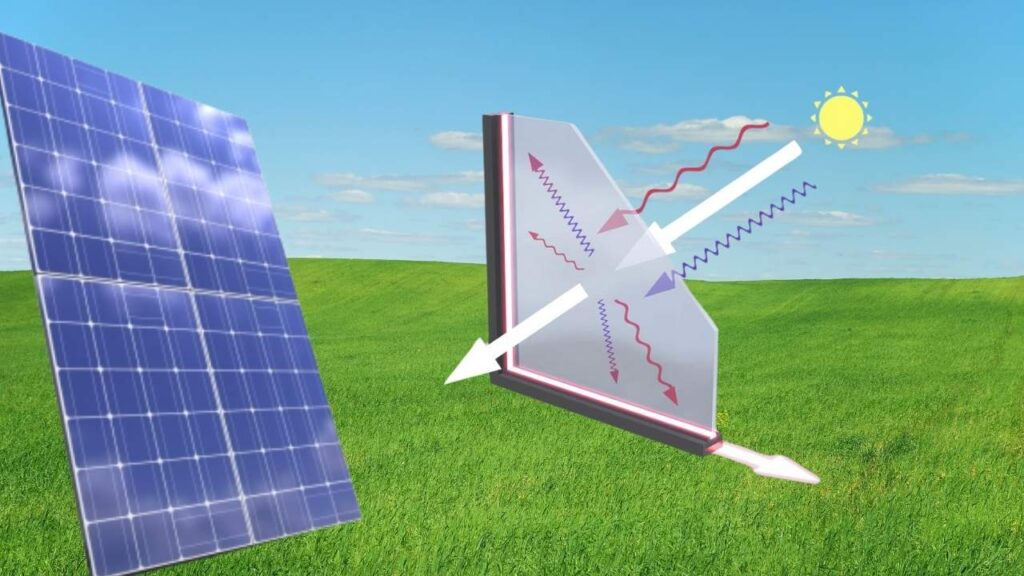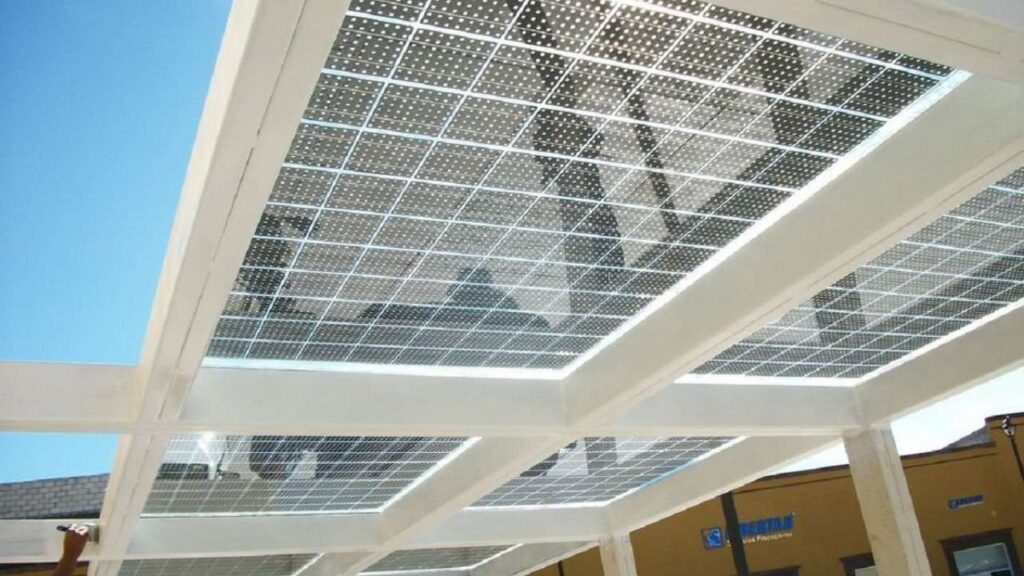MIT Researchers Develop Transparent Solar Panels for Windows and Mobile Devices: Imagine a world where your smartphone screen, office window, or even your car windshield could quietly generate clean energy without changing their look. Sounds futuristic? It’s not. In a groundbreaking development, MIT researchers have developed transparent solar panels that can be embedded into windows and mobile devices—offering a new, invisible source of renewable energy right where you least expect it.

This innovative technology could transform everyday surfaces into discreet energy sources, helping reduce our carbon footprint while keeping our gadgets and buildings efficient and sleek. Let’s explore what this technology is, how it works, and what it means for our future.
Table of Contents
MIT Researchers Develop Transparent Solar Panels for Windows and Mobile Devices
| Feature | Details |
|---|---|
| Technology | Transparent solar cells using UV and IR light absorption |
| Applications | Windows, smartphones, building facades, car glass |
| Transparency | Allows over 70% of visible light through |
| Efficiency | Up to 9.8% conversion efficiency |
| Materials Used | Organic photovoltaic materials, graphene, ultrathin substrates |
| MIT Research Info | MIT Energy Initiative |
| Scalability | Lightweight, flexible, and adaptable to many surfaces |
| Potential Impact | Reduced reliance on fossil fuels, energy-generating buildings and devices |
MIT’s innovation in transparent solar panels could mark a turning point in how we think about energy. Instead of bulky, visible installations, we may soon power our world with invisible tech integrated right into the surfaces we already use—windows, screens, and more.
From reducing electricity bills to enhancing sustainability in cities, the potential of this technology is vast. While still in development, it offers an exciting, realistic path toward a cleaner, more energy-efficient future.
What Are Transparent Solar Panels?
Transparent solar panels, also known as see-through photovoltaic cells, are a type of solar technology designed to generate electricity while remaining visually clear. Traditional solar panels absorb the full spectrum of sunlight, making them opaque. Transparent solar panels, however, only absorb ultraviolet (UV) and infrared (IR) light—leaving the visible light (what our eyes see) untouched.
This smart filtering means these panels can be integrated into windows, electronic screens, and glass facades without obstructing the view or changing the appearance of a surface.
How Do They Work?
These solar cells use materials like organic photovoltaics (OPVs) or perovskites, sometimes enhanced with graphene, a single layer of carbon atoms known for its conductivity and transparency. These materials are tuned to capture only specific light wavelengths (UV and IR), which are then converted into electrical energy.
Think of it like special sunglasses that block UV rays but still let you see perfectly.
Why This Is a Game-Changer for Green Energy

MIT’s development brings us closer to seamless integration of solar power into everyday life. With the average office building covered in windows, imagine every pane becoming a mini solar panel. And your smartphone? What if it could slowly charge while sitting on a windowsill?
Real-World Applications
Let’s break this down with clear examples:
- Skyscrapers: Glass-heavy buildings can generate electricity without changing architectural designs.
- Smartphones and Tablets: Self-charging screens that reduce battery dependency.
- Automobiles: Windshields and sunroofs that generate power for air conditioning or internal electronics.
- Homes: Energy-efficient smart windows that help power your house discreetly.
MIT’s solar panels are ultrathin, lightweight, and flexible, making them easy to apply on materials like plastic, tape, paper, or glass—a huge leap forward in design flexibility.
How Efficient Are Transparent Solar Cells?
While transparent solar cells aren’t as efficient as traditional panels yet, they’re quickly catching up. According to a peer-reviewed study published in Science Advances, researchers have achieved efficiencies of up to 9.8% while maintaining more than 70% transparency.
Compare this with traditional solar panels, which usually offer 15–22% efficiency but are opaque.
This balance between visibility and efficiency makes transparent cells ideal for supplemental power, especially in urban areas where space for traditional panels is limited.
The MIT Innovation: What Sets It Apart?
MIT’s transparent solar cells are built using graphene and other advanced materials that enhance conductivity and flexibility. They also employ roll-to-roll manufacturing, a scalable production technique similar to newspaper printing—making large-scale deployment feasible and cost-effective.
Key benefits include:
- Ease of Manufacturing: Uses existing industrial techniques.
- Material Abundance: Reduces reliance on rare elements.
- Durability: Maintains performance over time, even under direct sunlight.
This means we’re not only seeing a science project but a real path to commercial adoption.
A Step-by-Step Look at How This Technology Can Be Applied
Let’s walk through a simple use case: adding transparent solar panels to a commercial office building.
Step 1: Surface Preparation

Windows are cleaned and prepped for installation. MIT’s solar film is ultrathin, similar to window tinting, and can be applied directly.
Step 2: Panel Application
Using roll-to-roll techniques, the transparent solar film is applied to windows like a giant sticker.
Step 3: Energy Capture

The film captures UV and IR light throughout the day, converting it into usable electricity.
Step 4: Integration

The electricity generated can be fed into the building’s power system, stored in batteries, or used to offset energy costs.
Step 5: Monitoring & Maintenance
Real-time monitoring systems ensure performance and allow building managers to track energy savings.
Environmental and Economic Benefits
Transparent solar cells are more than just a tech marvel—they offer practical benefits for society and the environment:
- Reduced Carbon Emissions: Buildings and devices can partially power themselves.
- Lower Energy Bills: Supplemental energy generation reduces reliance on the grid.
- Urban Sustainability: Ideal for dense cities with limited roof space.
- Cost-Effective Over Time: While initial costs may be high, savings and energy efficiency add up.
Challenges Ahead
As with any emerging technology, there are some hurdles:
- Lower Efficiency: Compared to traditional panels, transparent cells generate less energy per square foot.
- Durability Concerns: Ensuring long-term performance under varying weather conditions.
- Regulatory Approval: New materials may need approval for use in public buildings or consumer electronics.
Still, researchers are optimistic. Ongoing advancements in materials science and manufacturing processes are expected to double efficiency and reduce costs in the coming years.
Infrared Innovations: Why Invisible Light Could Be Tech’s Next Big Frontier
The Rise of Wearable Technology: Materials That Make Smart Clothing Possible
Advancements in 3D Printing: How New Materials Are Expanding Possibilities
FAQs About Transparent Solar Panels for Windows and Mobile Devices
How much energy can transparent solar panels generate?
On average, they can reach up to 9.8% efficiency—suitable for supplemental power generation in windows, devices, or cars.
Are they truly transparent?
Yes, some designs maintain up to 70% visible light transmission, making them almost indistinguishable from regular glass.
Are they available for home use?
Currently, they’re in research and pilot phases, but commercial availability is expected within the next few years.
Will they replace traditional solar panels?
Not yet. They are best used as complementary energy sources, especially in areas where traditional panels can’t be installed.
Are transparent panels safe for screens and windows?
Yes, especially those using organic photovoltaics and graphene, which are flexible, lightweight, and non-intrusive.



















